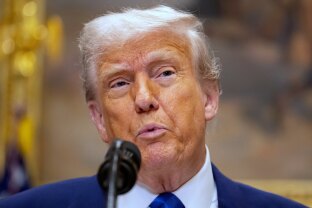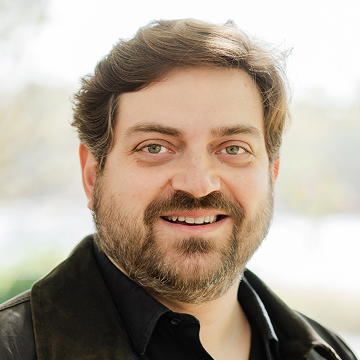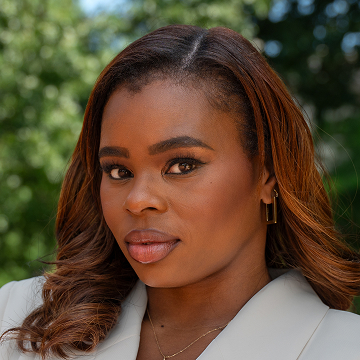President Donald Trump has repeatedly proclaimed that Washington is crime-free since he declared an emergency in the nation’s capital and surged federal agents and National Guard resources here.
“Look at D.C.,” he said in the Oval Office on Nov. 17. “There’s no crime in D.C. anymore, and D.C. was a mess.”
This isn’t true. On the same day, seven violent crimes and 132 property crimes were reported across seven of the city’s eight wards, according to Washington Metropolitan Police Department crime data.
Local leaders, community activists and experts say Trump’s crime crackdown didn’t just fail to end crime as he claimed. Instead, they say, it deepened community mistrust of law enforcement and disrupted long-term work to reduce violence in the nation’s capital.
“The surge just felt more like making an example out of our city, really, than intending to genuinely help with crime,” said Ebony Payne, ANC commissioner for Washington’s Kingman Park neighborhood. “Neighbors definitely want to live in a safe community. Everybody wants that. … But it has felt more focused on immigration, which is kind of tearing families apart and just instilling more fear.”
“So, how much has it actually helped with driving down crime?” she continued. “You know, I’m not sure if it’s really had that much of an impact.”
On paper, the federal surge in Washington began on Aug.11 and ended a month later. During that time, the Trump administration effectively took over the Washington Metropolitan Police Department and worked alongside hundreds of federal law enforcement officers from various agencies. More than 2,000 National Guard members from across the country were deployed into the District.
Even though the emergency surge has ended, Washington Mayor Muriel Bowser authorized a number of federal agencies to continue operating in the city, including performing roles previously left to MPD.
“I would go so far as to say that the surge has not felt like it’s ended,” said Mike Warburton, ANC commissioner for part of the Petworth neighborhood, adding that he regularly sees agents from the FBI and Homeland Security Investigations, the investigative arm of Immigration and Customs Enforcement.
Violent crime continues to happen in Washington despite the federal presence. One weekend in October saw 12 people shot across seven different locations in nine hours. Property crimes — particularly D.C.’s auto burglaries and motor vehicle thefts — abound.
There was a marked decrease in crime while the surge was ongoing. According to a CNN analysis of MPD crime data, in the first three weeks of the takeover, property crime incidents dropped by 25% and violent crime incidents fell by 10% from the previous three weeks.
Anthony Thomas-Davis, an ANC commissioner in Columbia Heights, said the surge served as something of a “reset,” giving local law enforcement the opportunity to get their arms around some of the issues in their community.
The White House has framed it as a clear success.
“There is no disputing the fact that Washington, DC is a safer, cleaner, and more beautiful city thanks to President Trump’s historic actions to restore the nation’s capital,” White House spokesperson Taylor Rogers told NOTUS in a statement. “Crime rates have dropped significantly and over 130 homeless encampments have been cleared since the President’s DC Safe and Beautiful Task Force was created in March.”
But according to data analytics expert Jeff Asher, it’s difficult to correlate that drops in crime to the federal surge — crime data is always fluctuating. Data on reported shootings suggests the drop in gun violence following the beginning of the surge has reversed.
“We’re generally seeing sharp declines in crime, we’re seeing sharp declines in gun violence. We’re seeing sharp declines in murder, and we happen to be seeing those same trends in all the available D.C. data,” he said. “So it makes it very difficult, I think, to tease out whether or not a specific intervention in a specific city had any effect.”
The federal surge was initially billed as a crime crackdown. And while that has been part of the effort, an outsized emphasis has been placed on immigration. Of the arrests that were made since the federal surge began, 40% were related to immigration, according to a CBS analysis published on Oct. 3.
Payne said she feels her community was subject to a bait and switch. She said immigration was not a concern among people in her neighborhood who wanted relief from crimes like theft.
“There’s been a lot of frustration because there has been so much emphasis put on ICE enforcement, when that wasn’t ever really the type of crime that the neighbors cared about,” she said. “It took me a while to realize that what they really meant by cracking down on crime was really just cracking down on immigrants. What the city really needed was more attention on youth crime and solutions for youth.”
In their initial announcements about the emergency surge, both Trump and D.C. Attorney General Jeanine Pirro singled out youth offenders, referring to them as “young punks,” and pledging to change the law to make it easier to prosecute them. Legislation to this effect is moving through Congress. The “Making the District of Columbia Safe and Beautiful” mission had no initiatives geared specifically toward youth offenders.
Meanwhile, the Trump administration has cut grand funding for some of the organizations that work to address root causes of crime through community violence intervention, which is credited with being part of why cities like Baltimore and Chicago have seen remarkable drops in crime over the past few years.
Those cuts have hindered the work of Peace for DC, a local non-profit organization that uses the community violence intervention model, said its executive director, Chandra Dawson. She said her organization seeks to curb crime by working with individuals and addressing the systemic factors that contribute to crime, like poverty, homelessness and racism.
Trump’s crackdown didn’t address those broader issues to create long-term change, Dawson said.
“This notion that crime declined — that was a fear response,” Dawson said. “People weren’t coming out of their homes. … There was no change, no behavioral change, no community healing, no resolution.”
Rogers said that federal law enforcement officers continue to work with local law enforcement to ensure the long-term success of the operation.
What has resulted is a blanket of fear across D.C. neighborhoods where federal presence continues — and even where it doesn’t. Thomas-Davis said he rarely sees federal agents in his Columbia Heights neighborhood, but the fear has paralyzed community members, particularly Latinos.
“The patrols, I don’t think are happening at the same clip,” he said. “That feeling, though, of just, I am still being kind of surveilled, and watched — there’s a palpable fear in the Hispanic communities of Columbia Heights that that is still happening. … They just do not trust that when they leave their home, something is not going to happen.”
The entire surge may have eroded work to improve residents’ trust in MPD, local leaders said.
“How do we find trust in law enforcement when we feel like they’ve only been a problem for our communities?” Thomas-Davis said. “And so the work ahead is going to take a long time, but I certainly do not think that anything that came out of the surge improved any of that.”
Sign in
Log into your free account with your email. Don’t have one?
Check your email for a one-time code.
We sent a 4-digit code to . Enter the pin to confirm your account.
New code will be available in 1:00
Let’s try this again.
We encountered an error with the passcode sent to . Please reenter your email.


